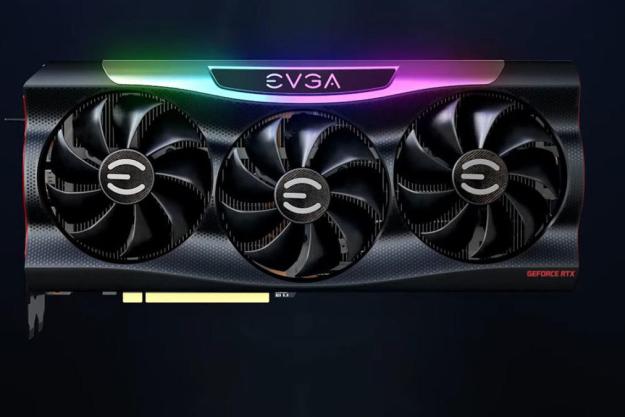So what sets apart the VR editions of the 980Ti and the other ten versions EVGA produces? Just a simple, structural change. The card now has an HDMI 2.0 port on the inside of the case, as well. That seems like an odd placement, but the VR edition of the 980 Ti also includes a breakout box for a 5.25-inch drive bay.
The breakout box has an HDMI 2.0 port and a pair of USB 3.0 ports built into the front of it. These ports are in the optimal location for a VR headset, giving users more room to move and enhancing cable distance, as well as saving them a trip behind the computer to plug everything in.

While EVGA is offering two different versions, they’re actually the same card with different cooling options. One sticks with the stock Nvidia blower fan, while the other adopts EVGA’s ACX 2.0+ open-air cooling. There’s no price difference between the two, so choosing between them will depend on your specific case setup.
Other than the breakout box and internal HDMI, the cards are no different than the standard EVGA offerings. The 6GB cards aren’t overclocked, offering the same 1,000 MHz Base clock and 1,076 MHz boost clock as any other GTX 980 Ti.
It helps that Nvidia’s GTX 980 Ti is by far the most powerful current generation GPU available to gamers, apart from the extravagant and very expensive GTX Titan line. It’s reasonable to expect a lot of users will upgrade to the 980 Ti in anticipation of VR’s launch, and EVGA’s plan to capitalize on that is a strong one, although it would’ve been nice to see overclocked cards with the feature.

If ease of access and more mobility with a headset on is an important feature to you, the EVGA 980 Ti VR Editions are available now for $700. That’s $40 more than the comparable non-VR card, and $60 more than the ACX 2.0+ version.
Editors' Recommendations
- EVGA’s lost RTX 4090 prototype shows us what could have been
- Nvidia CEO’s response to the EVGA controversy may surprise you
- EVGA is done making GPUs, and reports say it’s because of Nvidia
- You can now buy an EVGA RTX 3090 Ti below MSRP
- RTX 3090 Ti could consume an unheard of 1.2KW of power


